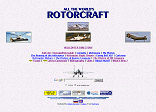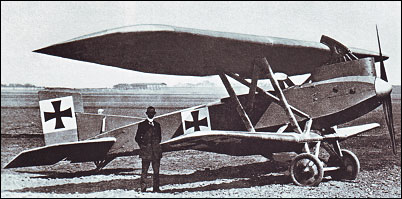|
| The Junkers J.1, which flew for the first time early in 1917 and became operational at the beginning of 1918, was an all-metal biplane
designed for close support and tactical reconnaissance. Its crew, whose main task was to fly at low level over enemy lines and report troop and vehicle movements via a radio link, was protected by a considerable weight of armour. This made the J.1 heavy, earning it the nickname Mobelwagen (Furniture Van). Manufacture was shared between the Junkers and Fokker factories, which produced a total of 227 aircraft between them. Instead of radio equipment, early J.1s carried two downward-firing Parabellum machine guns, but these were deleted because of problems with accurate aim.
| CREW | 2 |
| ENGINE | 1 x 200hp Benz Bz.IV water-cooled in-line engine |
| DIMENSIONS |
| Wingspan | 16.00 m | 53 ft 6 in |
| Length | 9.10 m | 30 ft 10 in |
| Height | 3.40 m | 11 ft 2 in |
| PERFORMANCE |
| Max. speed | 155 km/h | 96 mph |
| Ceiling | 6000 m | 19700 ft |
| Range | 310 km | 193 miles |
| ARMAMENT | 3 x 7.62mm machine-guns |
| Crimso, e-mail, 08.10.2012 06:18 > The Picture is an Junkers J4.
All correct. J4 is factory designation (Junkers's 4-th model), J.I is army designation (attack aircraft number one) reply | | lunshan, 20.06.2011 04:53 Parabellum machine guns, but these were deleted because of problems with accurate aim. reply | | Rino, e-mail, 14.11.2008 19:49 The Picture is an Junkers J4. reply |
|
Do you have any comments?
|
| 
COMPANY
PROFILE
All the World's Rotorcraft
|






